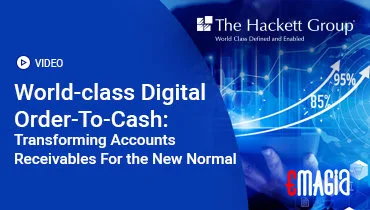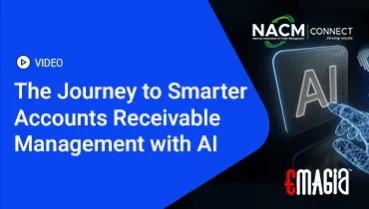Introduction: Decoding the Language of Payment Disputes with Dispute Reason Codes
In the intricate world of digital payments, merchants frequently encounter disputes, which can significantly impact their financial health and operational efficiency. Central to navigating these challenges are dispute reason codes. These alphanumeric labels are the universal language used by card networks and banks to classify why a cardholder has initiated a payment dispute, commonly known as a chargeback. Understanding “dispute reason codes” is not just about knowing a list; it’s about gaining critical insights into the root causes of transaction disputes and developing robust strategies for chargeback prevention and effective dispute management.
From alleged fraud to service issues and processing errors, each dispute reason code tells a specific story about why a transaction is being challenged. For businesses, mastering these codes is crucial for successful chargeback representment, protecting revenue, and maintaining strong relationships with customers and payment processors. This comprehensive guide will illuminate the landscape of dispute reason codes, their critical role in the payment ecosystem, the impact they have on your business, and actionable strategies for effective dispute resolution and proactive mitigation.
Understanding Dispute Reason Codes: The Foundation of Payment Dispute Management
At its core, a dispute reason code is a standardized label assigned by the issuing bank (the cardholder’s bank) when a cardholder contests a charge on their statement. These codes provide a concise explanation for the dispute, guiding the merchant on the nature of the claim.
What are Dispute Reason Codes? Defining the Core of Transaction Disputes
Simply put, dispute reason codes are specific codes that explain the cause of a payment dispute. For example, a code might indicate “merchandise not received,” “unauthorized transaction,” or “duplicate processing.” Each major card network – Visa, Mastercard, American Express, and Discover – has its own set of unique codes, though they often categorize disputes similarly.
Why Do Dispute Reason Codes Exist? Purpose in the Payment Ecosystem
Dispute reason codes serve several critical purposes. They standardize communication in the complex chargeback process, enabling all parties involved (cardholders, issuing banks, acquiring banks, and merchants) to understand the exact nature of the problem quickly. This standardization is vital for efficient dispute resolution and for merchants to tailor their chargeback representment efforts effectively. They help to categorize the problem and provide a starting point for gathering the right evidence.
The Role of Dispute Reason Codes in the Payment Ecosystem
These codes are not just labels; they are crucial diagnostic tools. They help card networks monitor trends in transaction disputes and identify potential vulnerabilities. For merchants, understanding these codes is the first step towards defending against invalid chargebacks and refining internal processes to reduce future disputes. They inform merchants about the type of evidence needed to counter a dispute effectively.
Key insight: Dispute reason codes are the vital communication link in the chargeback process, defining the issue and guiding the merchant’s response in payment disputes.
Common Categories of Dispute Reason Codes: Decoding Transaction Types
While specific codes vary by card network, most dispute reason codes fall into broad categories reflecting the nature of the transaction disputes.
1. Fraud-Related Disputes: Battling Unauthorized Transactions
This category is perhaps the most concerning for merchants. These dispute reason codes indicate that the cardholder claims the transaction was unauthorized or fraudulent. This often occurs with stolen card information or identity theft, particularly in card-not-present transactions (e-commerce). Common scenarios include unrecognized purchases or transactions made by someone other than the legitimate cardholder. Effective fraud prevention strategies are key here.
2. Service/Product Disputes: Addressing Customer Dissatisfaction
These codes arise when a cardholder disputes the quality of goods or services received, or claims they never received them. Examples include “merchandise not as described,” “services not provided,” or “defective goods.” These customer service disputes often highlight issues in fulfillment, product descriptions, or delivery processes. Transparent communication and robust delivery proof are vital for these payment disputes.
3. Processing Errors: Rectifying Systemic Issues
This category of dispute reason codes refers to technical or administrative mistakes during the transaction process. This could involve issues like “duplicate billing,” “incorrect amount charged,” or “late presentment” of a transaction. These are typically accidental merchant errors or system glitches that lead to transaction disputes. Accurate payment reconciliation is crucial for preventing such errors.
4. Authorization Issues: Ensuring Valid Transactions
These codes indicate that there was an issue with the transaction’s authorization. This might include “no authorization obtained,” “authorization expired,” or a declined authorization that was still processed. Proper authorization at the point of sale or online is essential to avoid these types of dispute reason codes.
5. Customer Disputes / Friendly Fraud: The Gray Area of Chargebacks
Often overlapping with other categories, friendly fraud occurs when a legitimate cardholder disputes a transaction they authorized, either due to buyer’s remorse, forgetting a purchase, or attempting to avoid payment. These dispute reason codes require careful investigation and strong evidence to counter, as the customer themselves is initiating the dispute, sometimes unknowingly.
Key Card Network Dispute Reason Codes: Navigating Specific Transaction Disputes
While categories are general, each major card network has its unique system of dispute reason codes. Merchants must be familiar with the specifics of the networks they process payments through.
Visa Dispute Reason Codes: Understanding the VCR System
Visa’s codes are typically numeric (e.g., 10.4 for “Other Fraud – Card Not Present,” 13.1 for “Merchandise/Services Not Received”). Visa’s system, known as Visa Claims Resolution (VCR), aims to streamline the dispute resolution process. Understanding their specific categories and detailed codes is paramount for merchants.
Mastercard Dispute Reason Codes: Decoding the Chargeback System
Mastercard’s codes are generally four-digit numeric (e.g., 4837 for “No Cardholder Authorization,” 4853 for “Cardholder Disputes Quality”). Mastercard also emphasizes compelling evidence to overturn disputes, making precise understanding of their dispute reason codes vital for chargeback representment.
American Express Dispute Reason Codes: Unique Categories
American Express often uses a combination of letters and numbers (e.g., F24 for “No Card Member Authorization,” C08 for “Merchandise/Service Not Received”). Amex has its own specific procedures and timelines for payment disputes.
Discover Dispute Reason Codes: Distinctive Classification
Discover’s codes also use alphanumeric combinations (e.g., UA02 for “Fraud – Card Not Present,” RG01 for “Merchandise/Service Not Received”). Familiarity with Discover’s dispute resolution protocols is necessary for merchants processing their cards.
The Importance of Card Network Specificity in Dispute Resolution
Ignoring the nuances between card network dispute reason codes can lead to lost disputes. Each network has different evidence requirements and timelines. Merchants must tailor their dispute management strategies to these specific guidelines to maximize their chances of winning a chargeback.
The Impact of Dispute Reason Codes on Merchants: Beyond Just Lost Revenue
Receiving a dispute reason code notification signifies more than just a potential financial loss. The cumulative effect of transaction disputes can severely damage a business.
1. Direct Financial Losses: The Cost of Chargebacks
The most obvious impact is financial. Merchants lose the revenue from the disputed sale. Additionally, they often incur significant chargeback fees from their acquiring bank, which can range from $20 to $100 or more per dispute, regardless of the dispute’s outcome.
2. Operational Burden: Resource Drain in Dispute Management
Managing payment disputes is time-consuming and labor-intensive. Responding to each dispute reason code requires investigating the transaction, gathering compelling evidence, and submitting a formal chargeback representment. This diverts valuable staff resources from core business activities.
3. Reputational Damage & Customer Trust: Eroding Brand Value
Frequent transaction disputes can erode customer trust and harm a brand’s reputation. While dispute reason codes are internal, a high volume of disputes can indicate underlying problems with customer service or product quality, leading to negative reviews and reduced customer loyalty.
4. Increased Risk of Merchant Account Termination: High Chargeback Ratios
Card networks and acquiring banks closely monitor a merchant’s chargeback ratio (the percentage of transactions that result in a chargeback). Exceeding certain thresholds can lead to penalties, higher processing fees, or even the termination of the merchant’s payment processing account, severely impacting the ability to conduct business.
5. Impact on Accounts Receivable and Cash Flow: Financial Instability
Unresolved transaction disputes can create significant discrepancies in accounts receivable. Funds that were once considered collected are reversed, leading to unpredictable cash flow and potential liquidity issues. This highlights why efficient accounts receivable management and dispute resolution are intertwined.
Strategies for Dispute Reason Code Management and Prevention: Proactive Measures
The best approach to dispute reason codes is prevention. Implementing robust strategies can significantly reduce the volume and impact of payment disputes.
1. Implement Robust Fraud Prevention Strategies: Halting Illegitimate Transactions
For fraud-related disputes, strong fraud prevention strategies are essential. This includes using tools like Address Verification Service (AVS), Card Verification Value (CVV), 3D Secure authentication, and leveraging AI-powered fraud detection systems that analyze transaction patterns and device fingerprints to flag suspicious activity.
2. Deliver Excellent Customer Service and Dispute Resolution: Pre-Chargeback Engagement
Many customer service disputes can be resolved before they escalate to a chargeback. Provide multiple, easily accessible channels for customer support. Promptly and amicably address customer inquiries, complaints, and refund requests. A simple refund or exchange can prevent a costly chargeback.
3. Ensure Clear Communication & Billing Descriptors: Transparency is Key
Often, dispute reason codes arise from customer confusion. Use clear and recognizable billing descriptors on credit card statements. Provide detailed order confirmations, shipping updates, and transparent refund policies. This proactive communication reduces instances of “customer doesn’t recognize” disputes.
4. Maintain Meticulous Proof of Delivery and Service: Documenting Transactions
For disputes claiming “merchandise not received” or “service not rendered,” irrefutable proof is vital. This includes shipping tracking numbers, delivery confirmations (especially signed), service contracts, usage logs, and communication records with the customer. Comprehensive documentation is your strongest defense during chargeback representment.
5. Optimize Return and Refund Policies: Fairness and Clarity
Clearly state your return, refund, and cancellation policies on your website and invoices. Make the process straightforward for customers. If a customer feels they can’t get a refund through normal channels, they are more likely to initiate a payment dispute via a chargeback.
Responding to Dispute Reason Codes: The Chargeback Representment Process
When a chargeback with a specific dispute reason code arrives, a structured chargeback representment process is crucial for reclaiming lost revenue.
1. Understand the Timeline: Act Swiftly on Dispute Reason Codes
Each card network has strict deadlines for responding to disputes. Merchants typically have a limited window (e.g., 30-45 days) to submit their chargeback representment package. Missing these deadlines means an automatic loss.
2. Gather Compelling Evidence: Tailoring Your Defense
The nature of the dispute reason code dictates the type of evidence required. For fraud, you’ll need AVS/CVV matches, IP addresses, and device IDs. For service disputes, provide proof of delivery, communication logs, and product descriptions. The more relevant and comprehensive the evidence, the higher your chance of winning.
3. Craft Your Response: A Clear and Concise Rebuttal
Compile your evidence into a clear, concise, and persuasive chargeback representment letter. Directly address the dispute reason code and explain how your evidence refutes the cardholder’s claim. Highlight your adherence to policies and transaction details.
4. The Role of Data in Successful Dispute Resolution
Analyzing your historical dispute reason code data can reveal patterns. If a particular code frequently appears, it points to an area needing process improvement. Data-driven insights are invaluable for refining your dispute resolution strategies and preventing future occurrences.
Emagia: Empowering Businesses with Intelligent Dispute Management for Accounts Receivable
At Emagia, we understand that efficient accounts receivable management is intrinsically linked to minimizing and effectively resolving dispute reason codes. Our intelligent automation platform extends beyond traditional collections, providing critical capabilities that directly or indirectly help businesses manage payment disputes and protect their revenue.
Emagia assists businesses in overcoming the challenges posed by dispute reason codes by:
- Proactive Dispute Identification: Our AI-powered solutions can flag potential transaction disputes early by analyzing payment behaviors, customer communication, and invoice discrepancies. This allows your team to address issues proactively before they escalate into formal chargebacks, leveraging insights from common dispute reason codes.
- Streamlining Documentation Retrieval: When a payment dispute does arise, Emagia centralizes and automates the retrieval of relevant transaction data, order details, communication logs, and proof of delivery. This rapid access to compelling evidence is crucial for building a strong chargeback representment case, aligning with the specific requirements of various dispute reason codes.
- Enhancing Customer Communication: By automating follow-ups and providing clear self-service portals, Emagia helps clarify invoicing details, preventing disputes related to billing errors or unrecognized charges. Clear communication reduces instances of customer service disputes and promotes better dispute resolution.
- Improving Cash Flow Predictability: By accelerating your overall order-to-cash cycle and reducing the time spent on manual dispute management, Emagia ensures more predictable cash flow. Fewer unresolved disputes mean fewer unexpected deductions and a healthier accounts receivable ledger.
- Providing Actionable Analytics: Emagia’s advanced analytics capabilities provide deep insights into recurring dispute reason codes and their root causes. This data empowers your business to identify patterns, optimize processes, and implement targeted chargeback prevention strategies, turning insights into tangible improvements.
By leveraging Emagia’s intelligent accounts receivable automation platform, you’re not just managing payments; you’re building a resilient financial operation equipped to understand, prevent, and effectively resolve dispute reason codes, safeguarding your revenue and strengthening your customer relationships.
Frequently Asked Questions About Dispute Reason Codes
What exactly are dispute reason codes and why are they important?
Dispute reason codes are alphanumeric labels assigned by card networks to explain why a cardholder is challenging a transaction (a chargeback). They are important because they standardize the communication in payment disputes, helping merchants understand the specific issue (e.g., fraud, service error) and gather the correct evidence for dispute resolution or chargeback representment.
How do major card networks categorize their dispute reason codes?
Major card networks like Visa, Mastercard, American Express, and Discover categorize their dispute reason codes into common types such as fraud-related (unauthorized transactions), service/product disputes (e.g., merchandise not received, defective goods), processing errors (duplicate billing, incorrect amount), and authorization issues (no authorization obtained). While the codes differ, the underlying categories are similar across networks.
What are the common impacts of dispute reason codes on merchants?
The common impacts of dispute reason codes on merchants include direct financial losses (lost revenue and chargeback fees), significant operational burden from dispute management, potential reputational damage, increased risk of merchant account termination due to high chargeback ratios, and negative effects on accounts receivable and cash flow.
What are effective strategies for dispute reason code prevention?
Effective dispute reason code prevention strategies include implementing robust fraud prevention strategies (e.g., AVS, 3D Secure), providing excellent customer service disputes resolution, ensuring clear billing descriptors and communication, maintaining meticulous proof of delivery/service, and optimizing return/refund policies to resolve issues before they escalate to chargebacks.
How does technology aid in managing dispute reason codes and chargebacks?
Technology significantly aids in managing dispute reason codes by providing tools for real-time fraud detection (AI/ML), automating dispute management processes like evidence gathering and response submission, enabling proactive monitoring of transaction disputes, and offering analytics to identify recurring patterns for targeted chargeback prevention. This leads to more efficient dispute resolution and reduced manual effort.
Conclusion: Mastering Dispute Reason Codes for Financial Resilience and Customer Trust
In conclusion, understanding dispute reason codes is not merely a technicality; it’s a fundamental requirement for any business operating in the digital payment landscape. These codes serve as vital indicators, communicating the precise nature of payment disputes and guiding merchants toward effective dispute resolution and robust chargeback representment strategies.
By proactively addressing the root causes identified by these codes – whether through enhanced fraud prevention strategies, superior customer service disputes handling, or streamlined internal processes – businesses can significantly reduce their exposure to financial losses and operational inefficiencies. Embracing intelligent dispute management technologies, like those offered by Emagia, further empowers organizations to not only respond to chargebacks more effectively but also to prevent them, safeguarding revenue, maintaining healthy accounts receivable, and fostering lasting customer trust. Mastering dispute reason codes is ultimately about building a more secure and resilient financial future.


